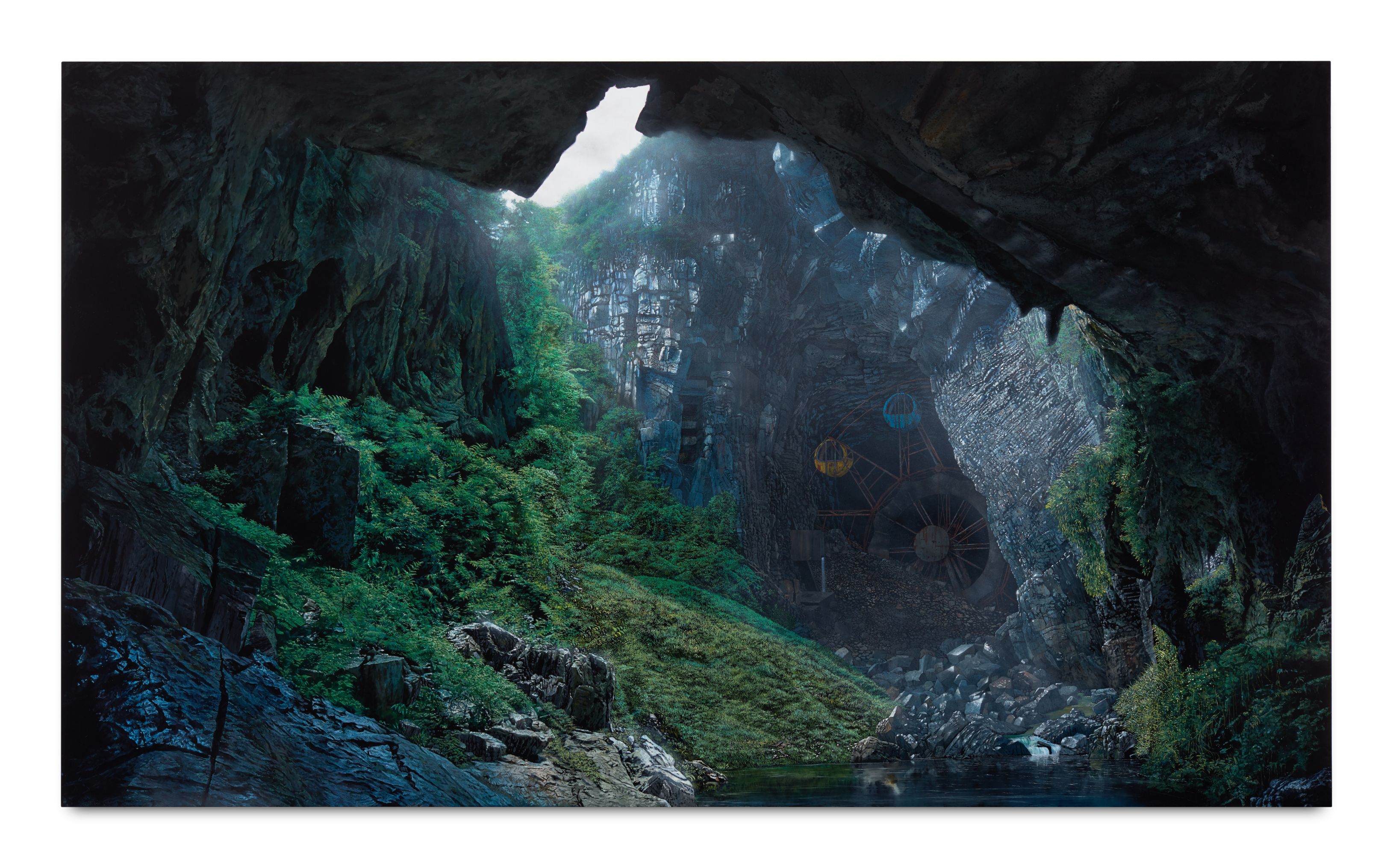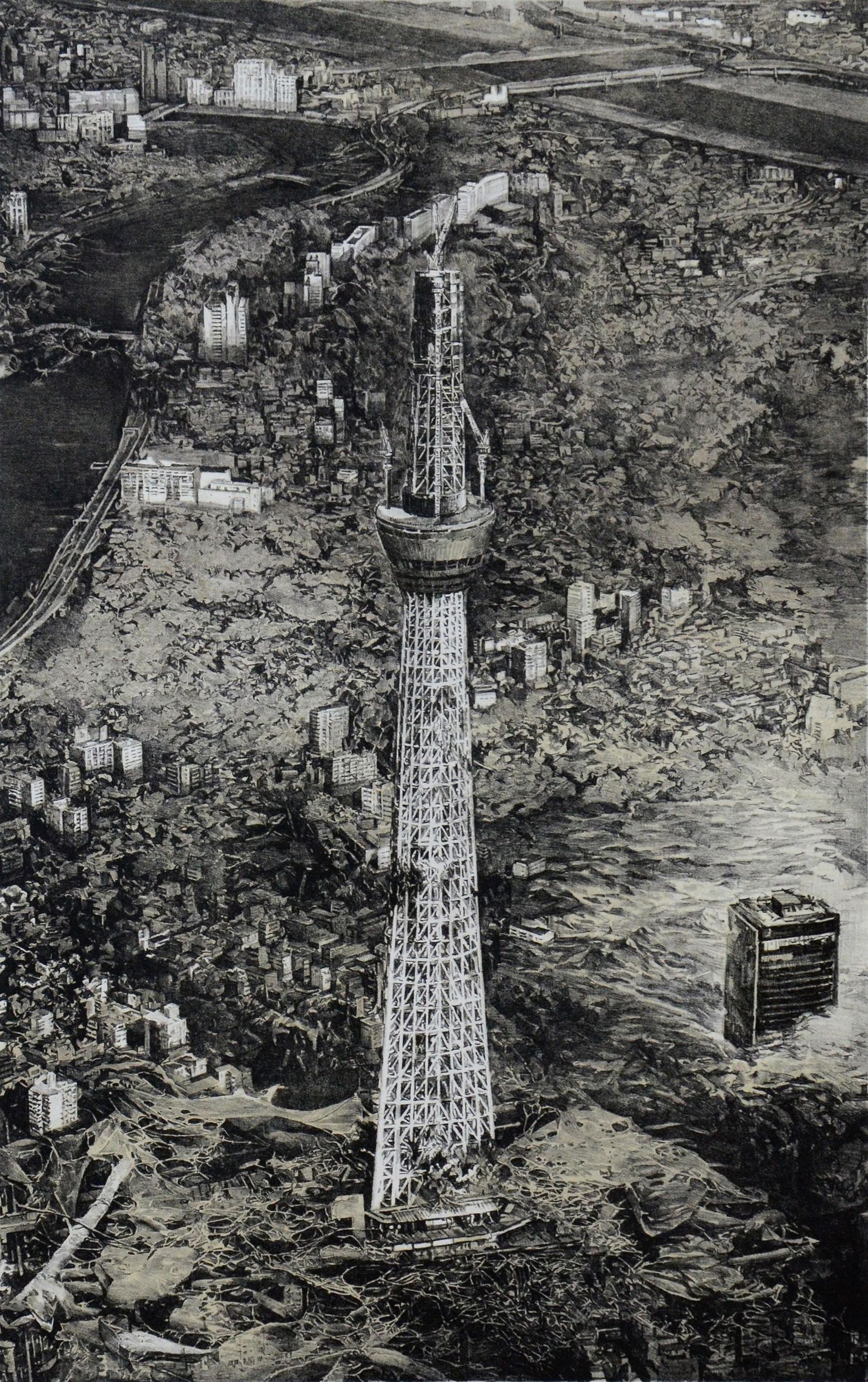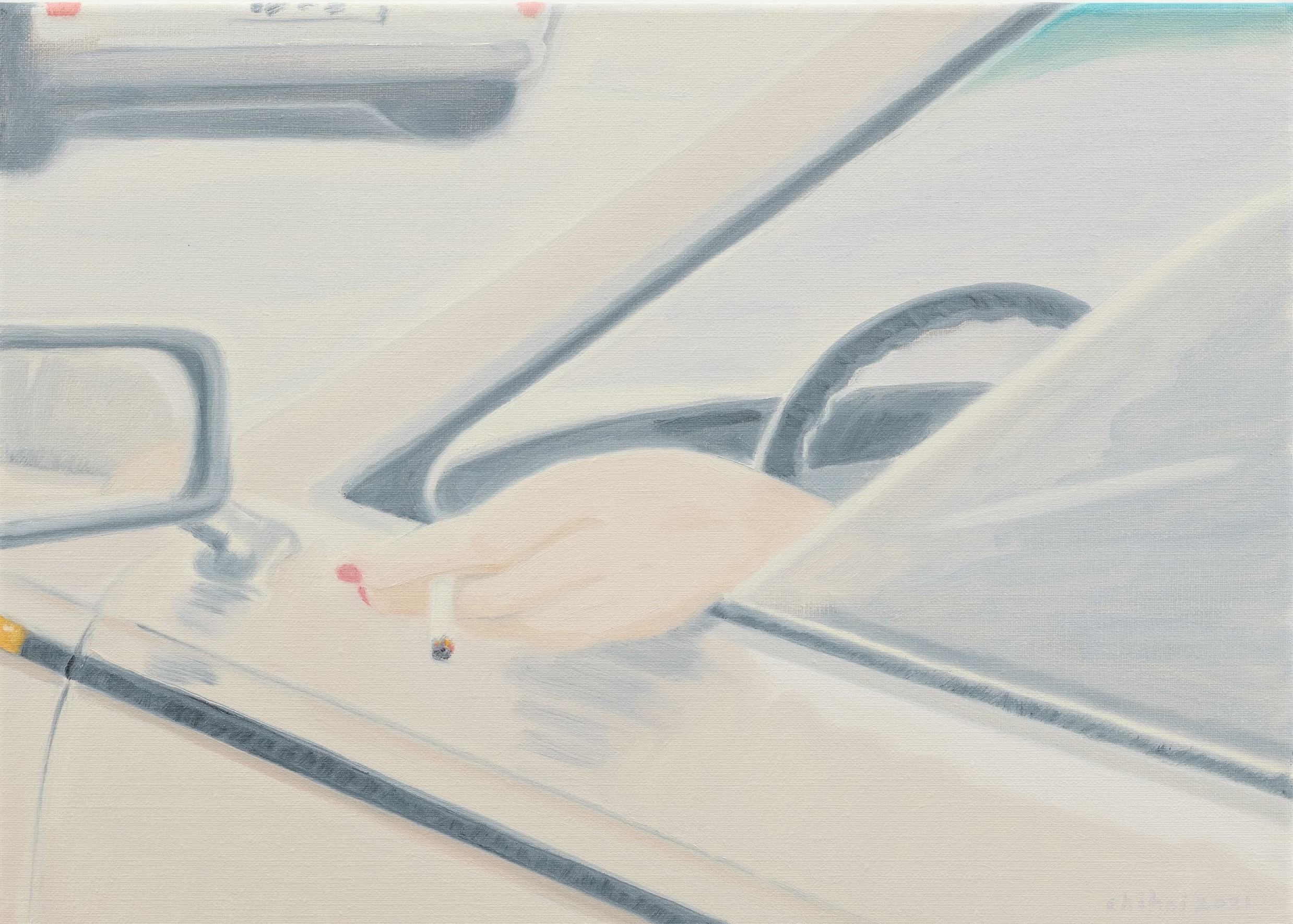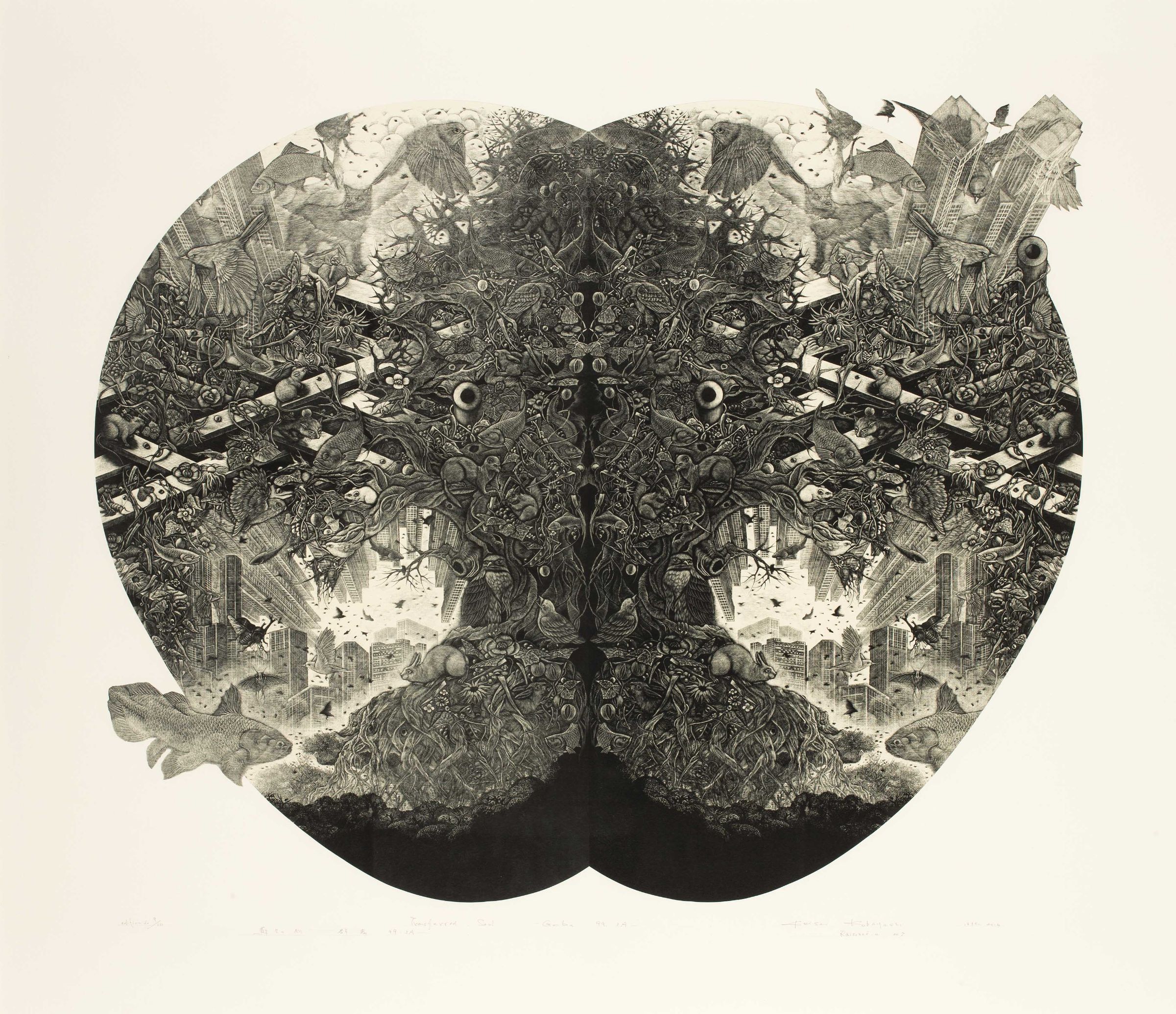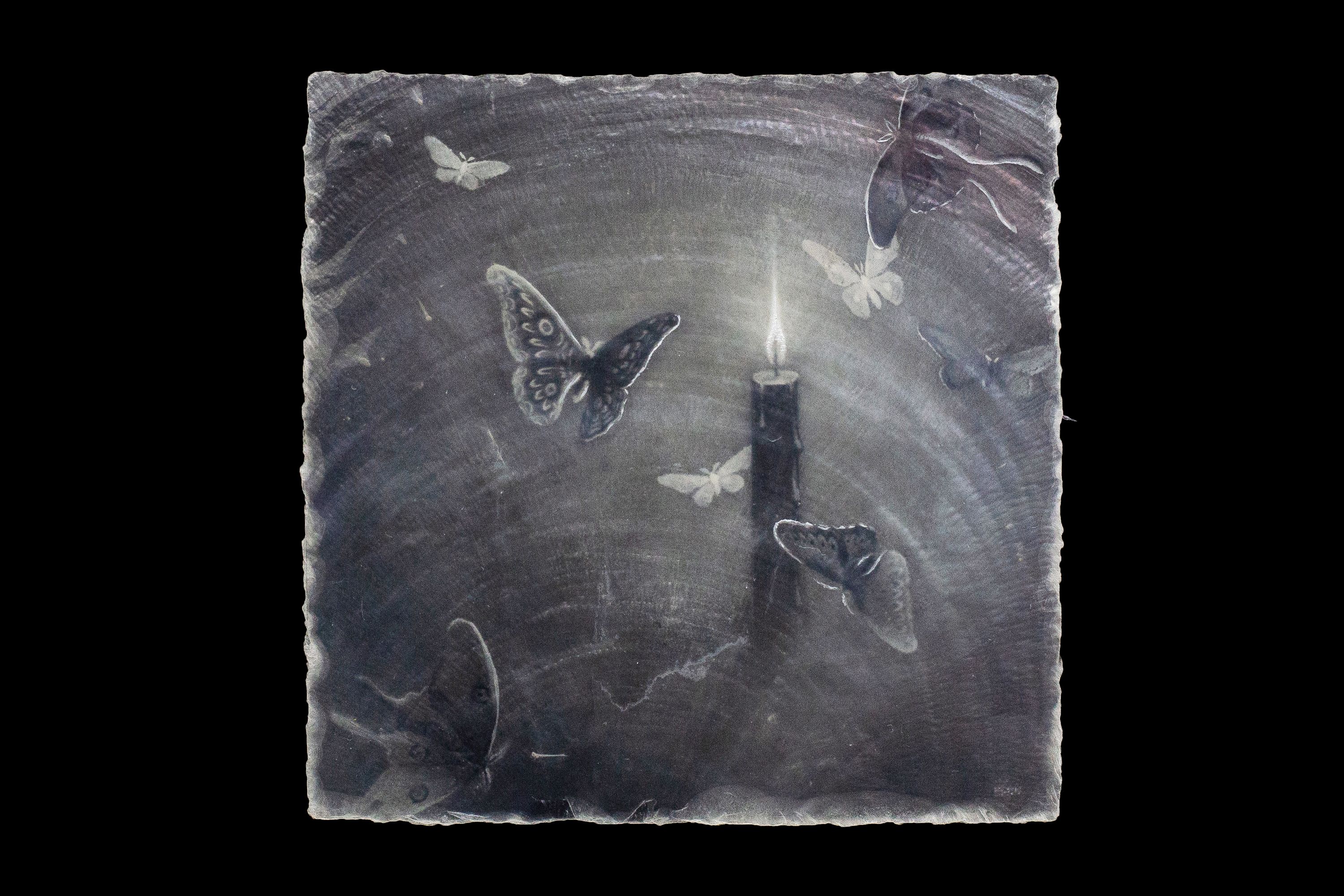The Everyday Interrupted


2023.5.6 - 2023.9.3 | 3F, Yu-Hsiu Museum of Art
Introduction
French philosopher Henri Lefebvre believes that social relations are only produced in everyday life, which is the only locus where social activities and structural systems exist. In other words, the everyday life is the fundamental essence of society, and humans are simply enmeshed in it. Consequently, if social activities are halted permanently and social relations abruptly stopped, what would our world be like?
The reality of this world can never remain permanently unchanged, and all kinds of relations co-exist and become entangled therein. We do not always have a way to truly and clearly tease out these relations, but can only keep the everyday life in a state of ambiguity. Like natural environment and material civilization, living and dying, past and present, it is a state of ceaselessly oscillating between losing and keeping the balance. Have you ever experienced a state of being distracted and absent-minded in some unknown moments? Even though life has never stopped moving forward, time is somehow discontinued in such moments, causing a halt of the everyday and some feelings that are unfamiliar.
This exhibition features the works of six artists respectively from Japan, Hong Kong and the Philippines. Naoya Inose’s painting evokes the impression of a landscape informed by apocalyptic desolation, which symbolizes the connection between humanity and society as well as the survival situation. Hisaharu Motoda’s dilapidated cityscape signals the broken minds of modern people. Is it that the apocalypse eventually overwhelms civilization? Or does civilization inevitably bring about the end of the world? This dualistic perspective indicates an unending process of dialectics, but material existences in this world will gradually but unavoidably fade into the past. Taking a closer look at Chihoi’s painting series featuring old Hong Kong might perhaps make nostalgia an entry point to deal with the emotions of modern times.
Keisei’s work is concerned with the excessive pursuits of human civilization and the consequently impacted ecology so as to emphasize on the equality of all living beings. The endangered butterflies painted by Gregory Halili on fragile seashell surfaces, together with the black-and-white still lifes by Mami Kosemura, point to the impermanence of the everyday, as well as the closeness of death to life. When the world continues to be disorderly as it has always been, and after the everyday life and all the habitual practices have been forced to come to a standstill, are we still able to calmly re-organize our thoughts and start moving forward?
Artists' Profile

Naoya Inose
Naoya Inose (b. 1988) was born in Kanagawa, Japan. He graduated from the Tokyo University of the Arts in 2012, with a major in oil painting. In 2017, he was accepted into the Chelsea College of Art & Design, London, and has lived in London since.
Inose has been featured in the 21st DOMANI (The National Art Center, Tokyo; 2018) and Roppongi Crossing (Mori Art Museum; 2022). His works have been featured worldwide, including the Yu-Hsiu Museum of Art (Caotun), the Takamatsu Art Museum (Takamatsu), the Powerlong Museum (Shanghai), Gallery Rosenfeld (London), Mall Galleries (London), Lily Agius Gallery (Malta), 798 Art Zone (Beijing), Rubelle & Norman Schafler Gallery (New York), and the Oriental Museum, Durham University (UK). His works are included in the collections of various institutions, such as the Fondazione Benetton (Italy), the Oketa Collection (Japan), and the Takahashi Collection (Japan).
Through his work, Inose continuously explores the natural world, how the human lifestyle has impacted nature, and peculiar scenes after nature is forcefully occupied. His painting is enshrouded by a mysterious atmosphere as it depicts peopleless places in an idiosyncratic style enriched with poignant symbolism that makes spectators wonder “what has happened exactly?” or “what is about to happen?” Inose’s landscape is both realistic and abstract, repeatedly inquiring into our relationship with nature and asking whether we have a sufficient understanding of it. He also challenges the seemingly unshakable status of the so-called masterpieces: what if these masterpieces were to be placed in the post-modern social context, how would they be altered and presented to us again?

Hisaharu Motoda
Hisaharu Motoda (b. 1973) was born in Kumamoto, Japan. He received his BFA from the Kyushu Sangyo University (KSU) in 1999, and his MFA from the Tokyo National University of Fine Arts and Music (now Tokyo University of the Arts). From 2017 onward, he has been a professor of painting at the College of Art and Design, Musashino Art University. Motoda’s interest and study of lithography germinated when he was still a student at the KSU. Fascinated with the objective expression of subject matter and independent quality of lines created with lithography, the artist considers the lithographic characteristics inexpressible in painting.
Motoda has held solo exhibitions at various art museums and galleries, including Art Front Gallery (Tokyo), Gallery KIDO Press (Tokyo), the Museum of Kyushu Sangyo University (Fukuoka), C.Square (Nagoya), Murata & Friends (Berlin), etc., and has been featured in group exhibitions at numerous art institutions, such as the Tokyo Station Gallery (Tokyo), the Tokyo Metropolitan Art Museum (Tokyo), the Shoto Museum of Art (Tokyo), the Honolulu Museum of Art (Honolulu), the Mead Art Museum (Amherst, USA), the National Art Center, Tokyo (Tokyo), the RMIT Gallery (Melbourne), and the Ueno Royal Museum (Tokyo).
Since 2004, Motoda’s work has revolved around fictitious yet highly realistic landscape of ruins. Drawing inspiration from “erosion and weathering/discoloration and deformation/damage,” which indicate the process of things being altered artificially, such landscape is contrarily closer to certain natural states in Motoda’s perspective. To him, this is not pessimistic, but suggests continuous change that ushers in new vitality instead. In recent years, Motoda feels that many unpredictable things have happened in this world. In turn, these events, to a large degree, influence how his works are viewed.

Chihoi
Chihoi (b. 1977) was born in old Hong Kong, and graduated from the Chinese University of Hong Kong in 1999, with a major in Food and Nutritional Sciences. He now lives in Taipei, where he contributes to the editorial affairs of the Taipei-based independent publishing house, nos:books. Since childhood, Chihoi has been fascinated with drawing, and has explored and studied various techniques and skills of art making. He started making art by drawing comics and illustrations. Since Chihoi was still in college in 1996, he already published his works in Hong Kong newspapers and magazines frequently; and soon, his works started being included in international comic anthologies as well. In recent years, Chihoi has shifted his creative focus to oil painting.
Chihoi has presented solo or duo exhibitions at multiple art institutions and spaces, among which are Gallery Exit (Hong Kong), the Grafixx Festival/De Studio (Antwerp), Project Fulfill Art Space (Taipei), JXJ Gallery (Taipei), ACO Art Space (Hong Kong), Mangasick (Taipei), CL3 Architects Ltd. (Hong Kong), the Fumetto Comix Festival (Switzerland), the BilBolBul Festival (Italy), and the Hong Kong Arts Centre (Hong Kong).
He has also been featured in numerous group exhibitions presented by art institutions around the world, such as the Yu-Hsiu Museum of Art (Caotun), Karin Weber Gallery (Hong Kong), La Villa Belleville (Paris), the 11th Seoul Mediacity Biennale (Seoul), We make it studio (Berlin), Hanina Contemporary Art (Tel Aviv, Israel), Baltanakts (Latvia), Gallery K1 (Stockholm, Sweden), the 11th Venice Biennale International Architecture Exhibition (Italy), etc.
In a way, Chihoi’s comics reveals how he deals with the external world, with content that is often incorporated with the subjects of dream and the subconscious, while refracting collective emotions or states of mind in the social environment ar large. His early work is characterized by a relatively pessimistic mood in his narrative visual style. However, in 2008, he was invited by the Hong Kong newspaper, The Sun, to create a comic series, titled Fa Fa World, which captivated the audience with its heartwarming quality. Chihoi has created innumerous comic works, including The Writer And Her Story (1999), Piece of Mind (2000), the semi-autobiographical Still Life (2003), Long Long Road — 25 Years of Independent Comics in Hong Kong (co-editor Craig Au Yeung; 2006), Hijacking – Hong Kong Comic Literature (comics created with Kongkee, and published in the Hong Kong newspaper, Mingpao; 2006-7), The Train (co-author Hung Hung), Library (2013), Library & I’m with my Saint (2018), and many more. Chihoi is a frequent guest to European comic exhibitions, and some of his works have been translated into multiple languages, including French, Italian, English and Finnish.
In his oil painting, Chihoi always tries to coagulate the initial feelings and emotions from certain moments. “Since there is no intellectual outlet, I could only use painting as a way to get some fresh air,” said the artist himself. Holding unto snippets of memory, he repeatedly tests his use of colors, lines, and the balance of composition to accurately capture the narrative atmosphere to the greatest extent. The figures and the scenes in his paintings seem to merge with each other, and constitute a dense psychic state.

Keisei Kobayashi
Keisei Kobayashi (b. 1944) was born in Matsue City in Japan’s Shimane Prefecture. He finished studying visual design at the Kyoto Institute of Design in 1968, and began making wood engravings in 1975. Deemed a highly iconic printmaker in Japan, Kobayashi is also a pioneering figure in the field of wood engraving. Kobayashi has been a professor at the Tama Art University since 1997. He is now the chairman of the Japan Print Association.
Kobayashi has won the Grand Prize of the Premio Leonaldo Sciasia amateur d’estampes competition (2015-2016; Italy). In recent years, he has presented solo exhibitions at ARDEL Gallery (Bangkok) and the Palazzo La Marmora (Biella, Italy). He has exhibited at various art institutions, including the Tama Art University Museum (Tokyo), the Museum of Modern Art, Shiga (Otsu), the Alhondiga de Granaditas Museum (Mexico), etc. From 1979 to 2022, Kobayashi has presented solo exhibitions numerous times at Shirota Gallery in Tokyo. He has been featured in group exhibitions at various art institutions, among which are the Yu-Hsiu Museum of Art (Caotun), the Asia Art Center (Beijing), the University of Alberta Museums (Canada), the Milal Museum of Art (Seoul), the Ishikawa Prefectural Museum of Art (Kanazawa), the Nagoya City Art Museum (Nagoya), the Tokyo Metropolitan Art Museum (Tokyo), the Bristol City Museum and Art Gallery (Bristol, UK).
Kobayashi’s work has been included in multiple prestigious collections, including the British Museum (UK), the Taipei Fine Arts Museum (Taiwan), the Museum of New Zealand Te Papa Tongarewa (New Zealand), the Gwangju Museum of Art (Korea), the Kuandu Museum of Fine Arts (Taiwan), the Yu-Hsiu Museum of Art (Taiwan), and numerous art museums in Japan, including the Bridgestone Museum of Art, Tokyo, the Machida City Museum of Graphic Arts, the Museum of Modern Art Kamakura Annex, the Osaka Contemporary Art Center.
Kobayashi started making prints as early as the 60s. One day, he found coincidentally Takao Hiwasaki’s wood engravings in Tokyo, and has dived into the world of wood engraving wholeheartedly ever since. A wood engraving work uses a section through the trunk or large bough of a hardwood tree, which possesses solid, dense and even texture that allows the creation of fine lines and vivid layers of varying shades. Therefore, the images of wood engraving prints can be realistic and concrete, with a protean spatiality in composition. To the artist, the imbalance between civilization and nature has been a constant worry. His work aims to highlight disharmonies in our living environment as well as the disquietude and changes in coexistence. His prints are filled with images signaling unrestricted human desires. While criticizing modernization, Kobayashi also celebrates life and optimism towards life through his work.

Gregory Halili
Gregory Halili (b. 1975) was born in Manila, the Philippines. He received his B.F.A. from the University of the Arts in Philadelphia. He relocated to the United States in 1988, and lived in the US for about a quarter of a century, before moving back to the Philippines in 2013.
Halili has exhibited extensively, and has held solo exhibitions at Art Dubai (Dubai), Silverlens (Manila), the Fatima University (Valenzuela City), Project Space Phlipinas (Quezon City), Nancy Hoffman Gallery (New York), West Gallery (Manila), Artists’ House Gallery (Philadelphia), the Ayala Museum (Manila), the John Michael Kohler Arts Center (Wisconsin), the Jorge B. Vargas Museum, University of the Philippines (Quezon City), the South Brunswick Public Library (New Jersey), the Butler Institute of American Art (Youngstown, Ohio), etc. He has also been featured in group exhibitions at numerous art institutions, among which are the Yu-Hsiu Museum of Art (Caotun), Silverlens (Manila), MO_Space (Taguig), Tokyo Gallery + BTAP (Tokyo), Nancy Hoffman Gallery (New York), the National Museum of the Philippines (Manila), the BenCab Museum (Baguio), and Ora-Ora (Hong Kong).
Halili grew up in an environment filled with plants, tropical flora and fauna, as well as enthusiastic locals in the Philippines. His childhood memory consequently adds a tropical air in his creative work. He is especially fond of miniature creations. In addition to using paper as a medium of expression, he also chooses materials with unusual texture, including elephant tusk and seashell, on which he interprets detailed subject matter with watercolor, opaque watercolor and oil. He carves and paints on the surface of nacre (mother of pearl) to create symbols of death, and sculptures created with human skulls and calcified coral reefs can also be found in his work. Halili often engages in the notions and ideas of memory, life, death, things that are wonderful, withering, and cycle. Religion, history, and the colonial past of the Philippines have also been influential factors in his practice.
Halili used to be viewed as a butterfly or tropical landscape painter, whose subjects range from flora and fauna, landscape, city, still life, religion, history and death. However, no matter how his subject matter and creative form evolve, the core idea of his work has remained unchanged, which is to explore the memory and fragility of life. Consequently, the capiz shells from the Philippines, a distinctively thin and ethereal material, have also become his chosen material to respond to the world in a creative way, through which he intends to provide the audience with a visual perception of delicate fragility.

Mami Kosemura
Mami Kosemura (b. 1975) was born in Japan’s Kanagawa Prefecture, and graduated from the Tokyo University of the Arts in 2005, with a major in oil and mural painting. She has conducted artist residencies in Switzerland (2013) and New York (2016). Kosemura is the recipient of multiple awards and honors, such as the Kume Keiichiro Award by the Tokyo University of the Arts (1996), the Young Video Artists Initiative (2002), the Nomura Art Prize (2005), and the 26th Gotoh Cultural Award (2015). Her works have been included in the collections of numerous art museums, including the University Art Museum, Tokyo University of the Arts (Japan), the Museum of Contemporary Art Tokyo (Japan), the Kuandu Museum of Fine Arts (Taiwan), the Museum of Modern Art, Gunma (Japan), the Asia Society Museum (USA), etc.
Kosemura has presented solo exhibitions at MA2 Gallery (Japan), the Hara Museum (Tokyo), DILLON+LEE (New York), Ai Kowada Gallery (Tokyo), and Yuka Sasahara Gallery (Tokyo). She has also been featured in group exhibitions at numerous art institutions, museums and galleries, among which are the Yu-Hsiu Museum of Art (Caotun), the Asia Society Museum (New York), Galerie Valérie Delaunay (Paris), Dazibao Gallery (Montreal), Jinjihu Art Gallery (Suzhou), the Stuttgart Trickfilm International Animated Film Festival (Stuttgart), the WAH Center (New York), the National Museum of Modern and Contemporary Art, Korea (Seoul), and the Kuandu Museum of Fine Arts.
Kosemura’s work revolves around photography and video installation. Evoking the qualities of painting, her images investigate the interrelation between photography, video and painting, as well as how these three media can become interwoven, influence one another, and induce changes of qualities. To the artist, photography aims to document real life. However, the existence of reality and how it is perceived are extremely ambiguous. Therefore, the scenes displayed in her works are characterized by a certain degree of fictionality. Through artificial means, the artist reveals again the so-called reality—the view of a world that stems from reality but has been defamiliarized. Apart from reverting our cognitive habit of viewing, this approach also engenders an alternative aesthetic experience.
In her earlier works, Kosemura concentrates on using stop motion techniques to portray objects in a long period of time, recreating the pseudo-space in two-dimensional painting, while observing the transformation of the video images. Her signature approach is to draw inspiration from European classical paintings, utilizing parts of these paintings in her arrangement of images. While deconstructing, reconstructing, and studying the structure of painting, she also produces idealized images of reality emblematic of her art. In recent years, she emphasizes on the continuity of the scenes in the painting images, fragmented or scroll-based video works, or images frozen with super slow motion capture, through which she is able explore the quality of time.
